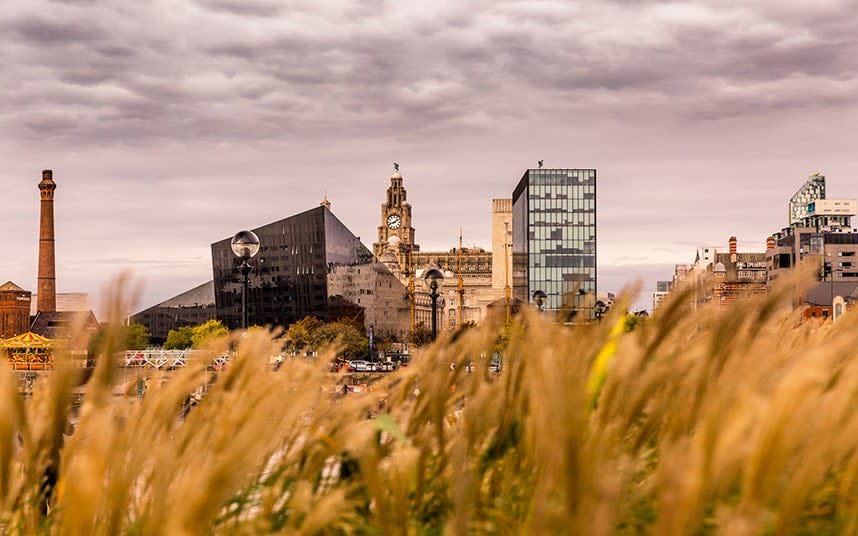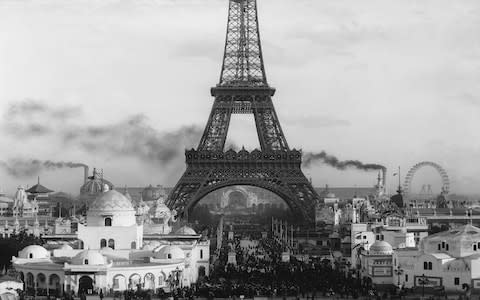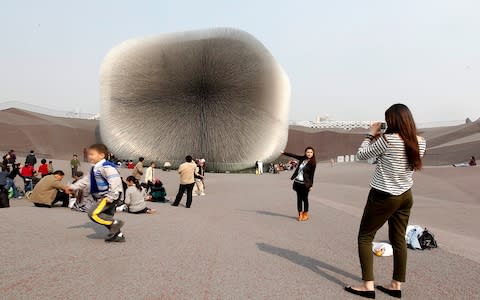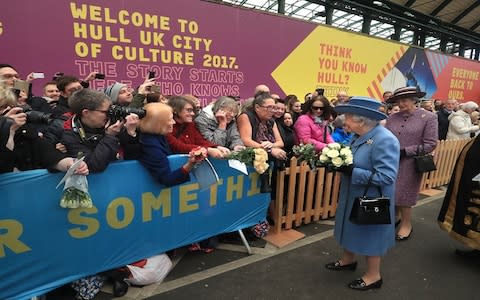Liverpool, Hull... Brent: Have we reached peak 'Capital of Culture'?

The history of “capitals of culture” reads a bit like a short story by the great Argentine novelist Jorge Luis Borges.
It started in 1851 with the Great Exhibition, when the cultures of the world convened in London. A hundred years later, the Festival of Britain celebrated everything British. Then there were European Capitals of Culture and soon after that, UK Cities of Culture – like Hull. Next, London was divided into Boroughs of Culture, and shortly thereafter they announced a House of Culture on every street, and then a Capital Room of Culture within each house, until humans were all assigned the most cultural part of their bodies before accepting that they, and all things, were culture.
Alright, the second half is yet to play out, but this week the Mayor of London Sadiq Khan brought it a step closer, announcing that Waltham Forest would become London’s first Borough of Culture in 2019.

The borough’s bid – backed by Damon Albarn and photographer David Bailey, who both grew up in the area – was victorious ahead of the 22 other London boroughs that entered (ten didn’t). Waltham Forest will get £1.35 million for the honour, before handing the flame to Brent in 2020.
Six runner-ups – Barking and Dagenham, Camden, Kingston, Lambeth, Lewisham and Merton – will share a consolation pot of £850,000, or £141,666 each. That this sum wouldn’t cover the Chief Executive of each borough’s annual salary is, of course, moot.
So, what else is coming up on the cultural map of the world? Deep breath.
In the next five years we will see nine European Capitals of Culture, including Leeuwarden 2018 (you know – Leeuwarden). There will be a World Expo in Dubai (2020) and the UK Capital of Culture crown will move from Hull to Coventry (2021). Then there’s the American Capital of Culture (Anzoátegui in Venezuela for 2018) and Arab Capital of Culture (Oujda, Morocco in 2018), both of which also change hands annually.
With this eye-crossing number of cultural capitals and expos across the planet, you have to wonder – does the practice of funneling attention onto a single destination for one year still have a tangible positive impact?

Let’s start with the good old fashioned World Fairs, now known as expos. These pan-global events were set up to show off the best of the world’s technology, industry and culture, with the host city typically erecting iconic buildings – like the Eiffel Tower in Paris, Space Needle in Seattle, and the sadly burnt down Crystal Palace in south London – to mark the event.
Urso Chappell, a world expo consultant, told the New York Times: “An expo marks a certain ‘coming of age’ for a city. It can aid a city’s physical redevelopment as well as the nation’s image abroad.” On top of that, a world expo will typically bring thousands of new jobs (albeit temporary ones) and pump a fair whack of money into the pockets of restaurateurs, hoteliers, fridge magnet traders and so on.
But as we saw in Shanghai, who hosted the expo in 2010, the fruits of these great exhibitions aren’t always so great.

The Shanghai expo cost an estimated total of US$55 billion (£40bn; considerably more than the 2008 Beijing Olympics), much of which was pumped into improving the city’s infrastructure. However, the process of preparing for the expo also meant thousands of homes were destroyed, displacing up to 18,000 families. Describing the demolition, Shanghai resident and columnist Adam Minter wrote in 2010: “A giant eraser seems to have been rubbed across whole city blocks.”
On the first weekend of the expo, officials had to concede that more than 40 per cent of those who had advance tickets didn’t turn up. Those who did attend over five months reported queues of up to nine hours to visit the national pavilions, prompting a common comment on the Chinese internet: “If you don’t go to Expo, you will regret it, but if you do go, you will regret it even more.”
Previous expos in Hanova (2000) and Seville (1992) were marred by disappointing legacies. In Seville, those pavilions that were not demolished were left to decay, turning the site into the stomping ground of urban explorers and admirers of abandoned places.
A post shared by fryupinspector (@fryupinspector) on Jul 13, 2017 at 7:25am PDT
Despite initial corruption, scandals and protests in the build-up, Milan (2015) hit visitor targets and was generally lauded as a success across international media, although whether Italy’s richest city was the most in need of an economic jump-start, in the midst of a national economic crisis, is up for debate.
Closer to home, the successes of Glasgow (1990) and Liverpool’s (2008) tenures as European capitals of culture led to the UK launching its own initiative, which saw Hull crowned as the first ever UK City of Culture in 2017 – to some raised eyebrows around the country.
After a year of successes, in which 3.5 million people visited the city and over £1 billion of investment flowed in, those eyebrows were firmly leveled and the city announced that the Culture Company, set up to deliver the Hull 2017 programme, would carry on as a permanent national arts fixture.

Martin Green, Director of Hull 2017, said: “We want to capitalise on the knowledge and expertise gained as Culture Company, supporting city efforts to help ensure a lasting cultural legacy for Hull, as well as helping to embed culture into policymaking for cities.”
Obviously, with that £1.35 million award in mind, Waltham Forest's year of culture will be a far lower-key affair than recent world expos and capital of culture tenures, so it's worth keeping expectations under control. No Crystal Palace for Chingford.
But council leader Clare Coghill is optimistic. "Our programme of events will ensure Londoners get to be a part of a spectacular year of events including a film festival in Leytonstone; laser installation in Epping Forest and a digital art extravaganza on Walthamstow Marshes," she told Telegraph Travel.
"As we are the first ever winner we have the added privilege of setting the benchmark for the award itself. Our year of culture will be about showcasing local talent as much as the place itself," she added. "We will have a special emphasis on our young people to ensure the lasting legacy of the award can be measured by those who go on to have careers in the creative industries."
Perhaps when the Waltham Forest councillors and organisers contemplate whether their year will be a success, they should turn to notable former resident Damon Albarn lyric in the Blur song, The Universal. “Yes, it really, really, really could happen,” so long as they stick to their word and keep legacy and locals at the heart of everything they do.

